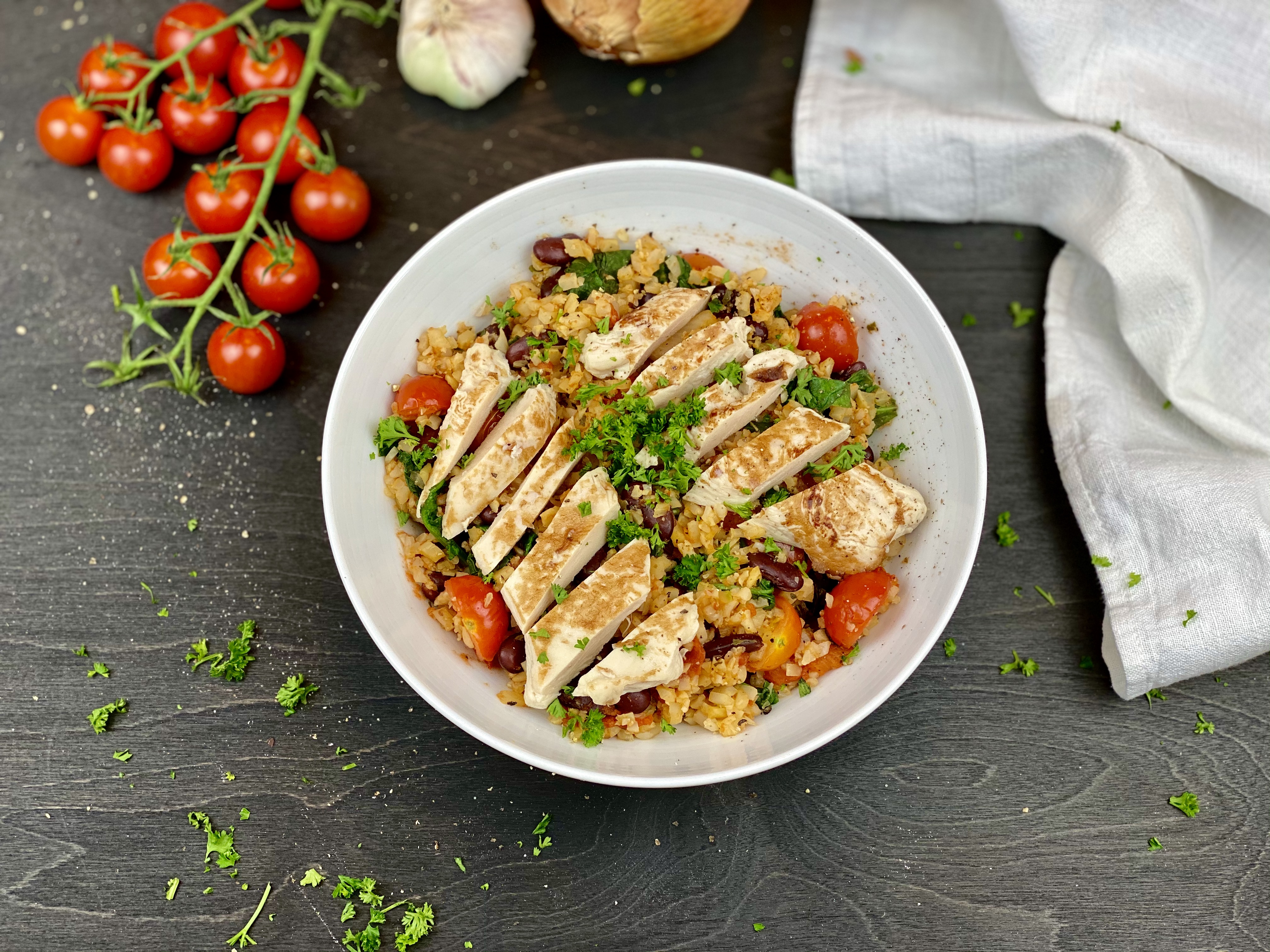Do you feel like you’re stuck in a rut when it comes to eating a balanced diet? Maybe it’s time to give your body the nutrition it needs with a low-carb, high-protein approach. Filling up with low-carb, high-protein foods will provide you with an abundance of energy and essential vitamins and minerals while helping you maintain a healthy weight. Here, we’ll explore the benefits of a low carb, high protein diet and how to get started with it.
1. The Benefits of Eating Low-Carb, High-Protein Foods
Eating healthy can be hard work, but one thing that can definitely make it a lot easier is to switch up your diet a bit. Low-carb, high-protein foods are good for maintaining a healthy weight and also offer several benefits when it comes to overall health and wellbeing.
Improved Cholesterol Levels: Eating high-protein low-carb meals can help improve your cholesterol levels by increasing your HDL (good cholesterol) and decreasing your LDL (bad cholesterol). This can help reduce your risk of developing heart disease and other life-threatening illnesses.
Greater Satiety: High-protein foods tend to be more satisfying and can help you feel full for longer, meaning you snack less throughout the day. This can be a great help when trying to shed a few pounds.
Stronger Bones and Muscles: Low-carb, high-protein diets can help build stronger bones and muscles, improve muscle recovery after physical activity, and ultimately prevent injuries. These conditions are especially important for elderly people as bone and muscle strength weaken over time.
- Improve cardiovascular health
- Maintain a healthy body weight
- Increase energy levels and reduce fatigue
- Improve digestion and overall health
In conclusion, eating low-carb, high-protein foods can have many benefits for your overall health and wellbeing. Not only do they help manage your weight, but they can also reduce your risk of heart disease, diabetes, and other diseases. Give them a try and see the difference.

2. Different Ways to Incorporate Low-Carb, High-Protein Foods Into Your Diet
Looking to up your protein and cut down on carbohydrates? Here are several delicious and healthy ways to incorporate low-carb, high-protein foods into your diet!
If you’re looking for a serious protein boost, look no further than lean meats and fish. Grilled chicken, baked turkey, and grilled salmon make for excellent sources of protein while being low-carb. If you’re looking to get a bit more creative in the kitchen, try grilling some veggie kabobs with your chosen protein, topped with a low-carb sauce!
Protein-packed snacks are also a quick and easy way to satisfy your nutritional needs. Options like nuts, low-carb protein bars, and hard-boiled eggs are full of protein and dietary fiber, perfect for snacking on in between meals. Or try Greek yogurt mixed with nuts, fruits, and spices for a healthier twist on a parfait.
For those looking to get their fill of both protein and carbs, opt for the classic combo of beans and legumes. Paired with some low-carb vegetables, this power duo adds a huggable chickpea-carrot medley to your plate. Don’t forget to also incorporate some healthy fats like flaxseed, olive oil, and avocado into your diet for that extra nutrient boost!
- Lean meats and fish
- Nuts, low-carb protein bars, and hard-boiled eggs
- Beans and legumes
- Healthy fats such as flaxseed, olive oil, and avocado

3. The Best Low-Carb, High-Protein Recipes
Tuna Salad
Tired of eating the same boring sandwiches for lunch? Switch up your midday meal routine with a tasty and nutritious tuna salad. All you need is 1 can of tuna, ½ cup of low-fat mayonnaise, 1 cut onion, ¼ cup of sliced black olives (optional), and a bit of salt and pepper. Mix them all together and serve on top of two slices of whole wheat toast or enjoy on its own. This is a great way to enjoy a low-carb and high-protein meal without sacrificing flavor!
Grilled Chicken and Veggies
Who says healthy meals need to be boring? Try your hand at this grilled chicken and veggies recipe for dinner. All you need is 1 grilled chicken breast, ¼ cup of olive oil, 2 cloves of minced garlic, 1 teaspoon of dried Italian herbs, ½ teaspoon of garlic powder, and a mix of sliced bell peppers and sliced zucchini. Brush the chicken with the olive oil and seasonings, then combine the veggies in a large bowl. Grill the chicken for 15 minutes, add the chopped veggies, and cook for another 10 minutes. Enjoy this restaurant-worthy meal in the comfort of your own home!
Pesto Pasta Primavera
Love pasta dishes? This pesto pasta primavera recipe is the perfect go-to for dinner. Start with 2 cups of vegetable broth, 8 ounces of whole wheat spaghetti, 2 tablespoons of vegan pesto, and 1 cup of sliced mushrooms. Boil the spaghetti in the vegetable broth until done, then add the pesto and mushrooms. Cook for an additional five minutes, then add a mix of your favorite veggies, such as cherry tomatoes, asparagus, and spinach. Top with a sprinkle of Parmesan cheese and you have the perfect balance of low-carb, high-protein meal!
4. What to Avoid When Eating Low-Carb, High-Protein
1. Processed Foods
It’s important to stick to whole foods when eating a low-carb, high-protein diet. Try to avoid processed foods as much as possible. Pre-packaged meals are tempting, but they tend to be high in calories and sodium. Instead of breaking open a bag of chips, reach for a handful of almonds or some cherry tomatoes.
2. High-Fat Meats
Proteins are essential for a low-carb, high-protein diet, but not all proteins are created equal. Skip unhealthier cuts of meat such as fatty beef, bacon and processed meats like sausage and look for lean proteins like:
- Skinless chicken
- Fish
- Turkey
- Egg whites
3. Sugar and Refined Carbohydrates
It goes without saying that sugar should be completely avoided. But, refined carbs should also be limited. These types of carbs are found in white bread, white pasta and other wheat-based products. Instead, opt for complex carbs such as legumes, quinoa and brown rice.
5. Tips to Get the Most Out of Low-Carb, High-Protein Eating
Changing to low carb, high protein eating can help you cut back on unhealthy carbs and take in important nutrients. Here are five tips to help you get the most out of your new way of eating.
First, don’t cut carbs too much, at least to start with. When you’re just beginning, it’s better to reduce your carb intake slowly to give your body time to adjust. Gradually adjusting your carb count is more likely to help you stay committed to your new lifestyle.
Second, know your sources. Not all carbs are created equal, and it’s important to be sure you’re eating the nutrient-rich carbs that provide your body with energy to burn. Those carbs should come from sources like legumes, fruits, and whole grains. Leave the processed carbs for the occasional treat.
Finally, don’t forget about space for indulgence. You don’t have to cut out all unhealthy carbs forever, but it’s essential to give yourself a break now and then. You’ll have a much easier time staying on track if you allow yourself some of your favorite things in moderation. Here are some ideas on how to allow yourself treats in a healthy way:
- Plan indulgent snacks between meals
- Choose a small portion when eating out
- Set strict limits and stick to them
Low-carb, high-protein eating can help you remain healthy and energized. Following these tips will help you get the most out of your new diet.
6. Power Up with Low-Carb, High-Protein Eating!
A low-carb, high-protein diet can be your secret weapon to burning fat stores and unlocking your optimal fitness potential. Eating low-carb, high-protein foods gives you energy for longer periods of time, reduces cravings, and helps keep your blood sugar stable. Here are some delicious and nutritious recipes to get you started:
• Coconut Curry with Broccoli and Halibut: This is a vegan-friendly lunch or dinner option that takes only minutes to prep and is packed with satiating protein. A combination of fresh vegetables, coconut milk, and seasonings give this dish a beautiful flavor.
• Superfood Salad Bowl: This vibrant salad bowl is a perfect dinner or meal-prepping option that can be assembled in a jiffy. It contains creamy avocados, zesty tomatoes, crunchy quinoa, and quick-cooking black beans – all of them are sources of lean protein.
• Quinoa Vegetable Burgers: Burgers don’t have to be unhealthy! These quinoa vegetable burgers have a crunchy texture and earthy flavor from the quinoa and peppers. Topped with avocados, tomatoes, and diced onions, these burgers are a guilt-free way to satisfy your cravings.
By incorporating these low-carb, high-protein recipes into your menu, you will be able to not only reach your fitness goals, but also gain loads of energy, reduce food cravings, and maintain a healthy and balanced diet.
Be sure to fuel up with low carbs and high protein for your body and mind. Packing the right kind of food will keep you feeling strong and energized all day long. Start eating smarter and start feeling the benefits in your everyday life. Enjoy your journey and the delicious rewards of a well-fed body!
